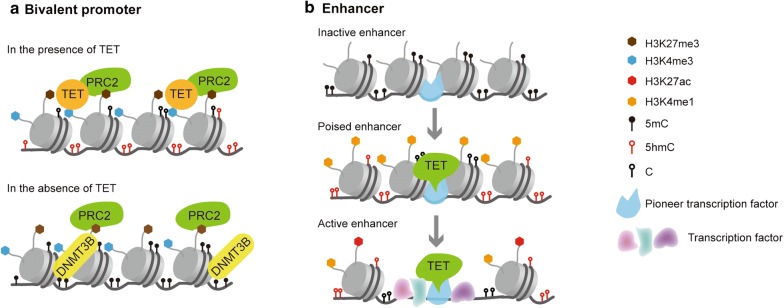Fig. 1.
The role of TET proteins on lineage-specific bivalent promoters and enhancers. a In the presence of TET dioxygenases, PRC2 recruits TETs to bivalent promoters to maintain their hypomethylated status. In the absence of TETs, binding of DNMT3B at the bivalent promoters causes de novo DNA methylation, which leads to stable gene silencing and loss of developmental plasticity. b A model of TET-mediated enhancer priming and activation. Upon differentiation, pioneer transcription factors that are not sensitive to DNA modifications can bind to distal enhancers of lineage-specific genes and recruit TETs to demethylate methylcytosines. Other epigenetic modifiers, such as p300 and SET1/COMPASS, subsequently bind to these sites and establish poised (H3K4me1) and active (H3K27ac) enhancers, which in turn increases chromatin accessibility and allow other transcription factors binding to occur

